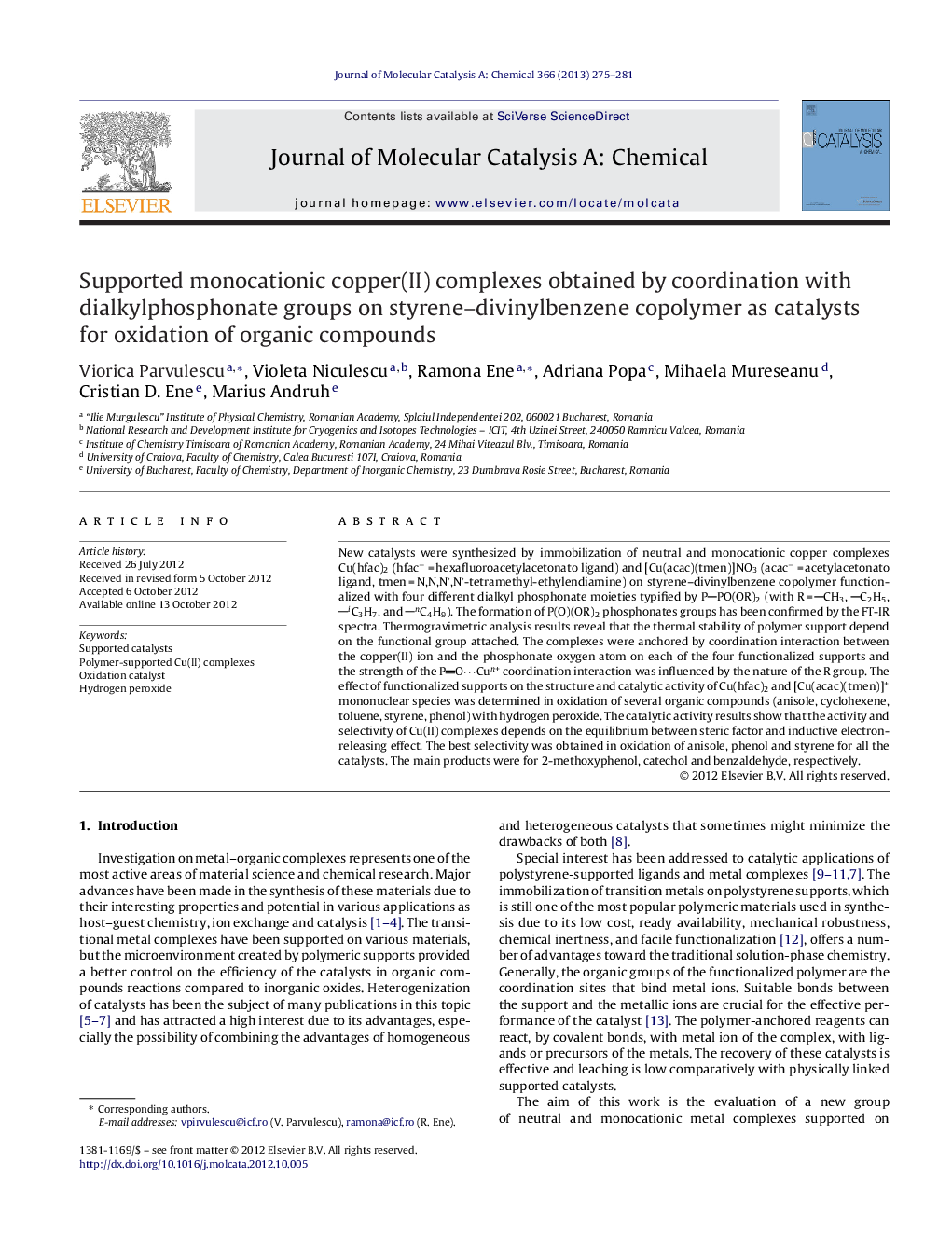| Article ID | Journal | Published Year | Pages | File Type |
|---|---|---|---|---|
| 65966 | Journal of Molecular Catalysis A: Chemical | 2013 | 7 Pages |
New catalysts were synthesized by immobilization of neutral and monocationic copper complexes Cu(hfac)2 (hfac− = hexafluoroacetylacetonato ligand) and [Cu(acac)(tmen)]NO3 (acac− = acetylacetonato ligand, tmen = N,N,N′,N′-tetramethyl-ethylendiamine) on styrene–divinylbenzene copolymer functionalized with four different dialkyl phosphonate moieties typified by PPO(OR)2 (with R = CH3, C2H5, iC3H7, and nC4H9). The formation of P(O)(OR)2 phosphonates groups has been confirmed by the FT-IR spectra. Thermogravimetric analysis results reveal that the thermal stability of polymer support depend on the functional group attached. The complexes were anchored by coordination interaction between the copper(II) ion and the phosphonate oxygen atom on each of the four functionalized supports and the strength of the PO⋯Cun+ coordination interaction was influenced by the nature of the R group. The effect of functionalized supports on the structure and catalytic activity of Cu(hfac)2 and [Cu(acac)(tmen)]+ mononuclear species was determined in oxidation of several organic compounds (anisole, cyclohexene, toluene, styrene, phenol) with hydrogen peroxide. The catalytic activity results show that the activity and selectivity of Cu(II) complexes depends on the equilibrium between steric factor and inductive electron-releasing effect. The best selectivity was obtained in oxidation of anisole, phenol and styrene for all the catalysts. The main products were for 2-methoxyphenol, catechol and benzaldehyde, respectively.
Graphical abstractFigure optionsDownload full-size imageDownload high-quality image (77 K)Download as PowerPoint slideHighlights► Mononuclear Cu(II) complexes anchored on functionalized polymer supports. ► Supports are phosphonate-functionalized styrene–divinylbenzene copolymer. ► Phosphonate groups of supports influence Cu(II) complexes properties. ► Materials are catalytically active in liquid phase oxidation of organic compounds. ► Equilibrium of steric and inductive effect influences catalytic properties.
